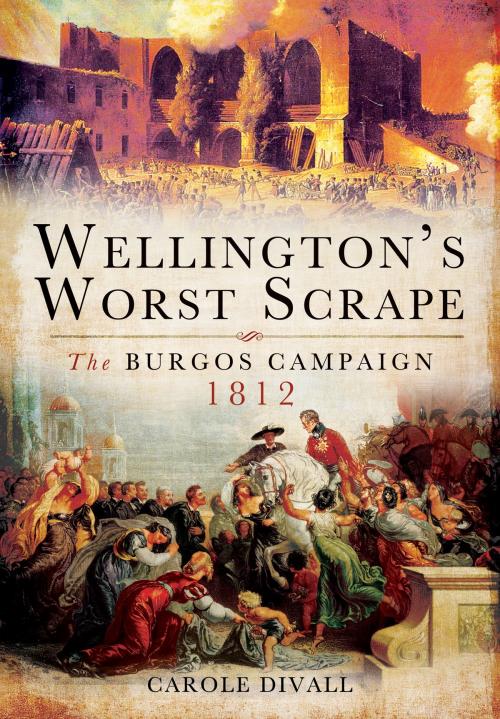| Author: | Carole Divall | ISBN: | 9781783378661 |
| Publisher: | Pen and Sword | Publication: | January 19, 2013 |
| Imprint: | Pen and Sword | Language: | English |
| Author: | Carole Divall |
| ISBN: | 9781783378661 |
| Publisher: | Pen and Sword |
| Publication: | January 19, 2013 |
| Imprint: | Pen and Sword |
| Language: | English |
The disastrous retreat and near disintegration of Sir John Moore’s army on the road to Corunna in 1809 is traditionally regarded as the low point in the history of the British intervention in the Peninsular War. Yet under the Duke of Wellington, the British and their allies suffered defeats and retreats that tend to be overshadowed by the series of victories that eventually drove the French from Portugal and Spain. None of these setbacks was graver than the retreat that followed the disastrous failure of the siege of Burgos in 1812. It is this, less than glorious, phase of the Peninsular campaign that is the subject of Carole Divall’s latest study of the British army of the Napoleonic Wars.
By reconstructing events in close detail, and by bringing together [many] primary sources, she gives a vivid account of what happened and why. Wellington himself recognized the mistakes and miscalculations that led to the potentially catastrophic situation in which he placed his men. He described it as his ‘worst scrape’. Yet most of the letters, journals and memoirs that have survived praise the skill with which he saved Britain's only army from disaster.
Carole Divall weaves together Wellington’s dispatches with the eyewitness testimony left by British and Portuguese officers and men, by civilians, and by the French. A fascinating, multi-layered impression emerges of the siege of Burgos itself and the sequence of maneuvers that preceded it. She describes in authentic detail the tense decision-making and the misjudgments that were made on the allied side and the headlong retreat that followed as the British fled from two French armies that threatened to trap and destroy them.
Carole Divall’s in-depth study of a pivotal – and neglected – episode in the Peninsular War gives a fascinating insight into the character of the fighting, at every level, and into the strengths and weaknesses of Wellington’s command.
The disastrous retreat and near disintegration of Sir John Moore’s army on the road to Corunna in 1809 is traditionally regarded as the low point in the history of the British intervention in the Peninsular War. Yet under the Duke of Wellington, the British and their allies suffered defeats and retreats that tend to be overshadowed by the series of victories that eventually drove the French from Portugal and Spain. None of these setbacks was graver than the retreat that followed the disastrous failure of the siege of Burgos in 1812. It is this, less than glorious, phase of the Peninsular campaign that is the subject of Carole Divall’s latest study of the British army of the Napoleonic Wars.
By reconstructing events in close detail, and by bringing together [many] primary sources, she gives a vivid account of what happened and why. Wellington himself recognized the mistakes and miscalculations that led to the potentially catastrophic situation in which he placed his men. He described it as his ‘worst scrape’. Yet most of the letters, journals and memoirs that have survived praise the skill with which he saved Britain's only army from disaster.
Carole Divall weaves together Wellington’s dispatches with the eyewitness testimony left by British and Portuguese officers and men, by civilians, and by the French. A fascinating, multi-layered impression emerges of the siege of Burgos itself and the sequence of maneuvers that preceded it. She describes in authentic detail the tense decision-making and the misjudgments that were made on the allied side and the headlong retreat that followed as the British fled from two French armies that threatened to trap and destroy them.
Carole Divall’s in-depth study of a pivotal – and neglected – episode in the Peninsular War gives a fascinating insight into the character of the fighting, at every level, and into the strengths and weaknesses of Wellington’s command.















